What's New Under The Sun
Madison Historic Dial Returns
Monday, 13 October 2025 22:49
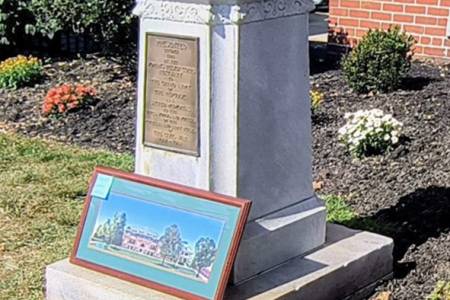 On October 4, 2025 Madison Historical Society of Ohio was able to have their sundial returned after 32 years, when in 1993 it was moved to the lawn of Lake County Courthouse to reduce the chance of vandalism. The sundial was originally placed at Madison Home 100 years ago on Saturday, October 24, 1925 during a conference of the Women's Relief Society. From 1904 to 1962 the state ran this...
On October 4, 2025 Madison Historical Society of Ohio was able to have their sundial returned after 32 years, when in 1993 it was moved to the lawn of Lake County Courthouse to reduce the chance of vandalism. The sundial was originally placed at Madison Home 100 years ago on Saturday, October 24, 1925 during a conference of the Women's Relief Society. From 1904 to 1962 the state ran this...
Elements of Dialing Course - 2025
Monday, 15 September 2025 19:42
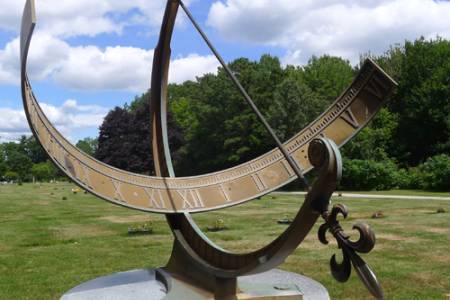 NASS is pleased to announce the upcoming fifth instance of Elements of Dialing, our introductory course about sundials, their history, and the science that makes them work. The free 12-lesson course, intended for those are new to sundialing, runs from 27 October 2025 until 26 April 2026. The course instructor is Robert Kellogg, NASS Vice President and Sundial Registrar. Bob will be...
NASS is pleased to announce the upcoming fifth instance of Elements of Dialing, our introductory course about sundials, their history, and the science that makes them work. The free 12-lesson course, intended for those are new to sundialing, runs from 27 October 2025 until 26 April 2026. The course instructor is Robert Kellogg, NASS Vice President and Sundial Registrar. Bob will be...
Sun Queen of World War II
Thursday, 11 September 2025 23:11
 A Hungarian born American scientist, Mária Telkes (1900-1995), was called "The Sun Queen" and among other honors, was postmousthly inducted into the National Inventors Hall of Fame. She lived to 95 and for most of her life developed solar power in a variety of forms.
Trained as a biophysicist, she worked for Westinghouse Electrical and Manufacturing Company in Pittsburgh, PA, where she...
A Hungarian born American scientist, Mária Telkes (1900-1995), was called "The Sun Queen" and among other honors, was postmousthly inducted into the National Inventors Hall of Fame. She lived to 95 and for most of her life developed solar power in a variety of forms.
Trained as a biophysicist, she worked for Westinghouse Electrical and Manufacturing Company in Pittsburgh, PA, where she...
2025 Conference -Ottawa
Thursday, 28 August 2025 23:25
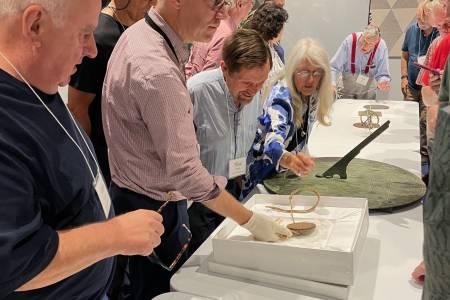 The annual NASS Conference was held 7-10 August, 2025 in Ottawa. As usual, the conference began late Thursday afternoon with an introduction social and a "grab bag give away", taking your chances with tickets to win the bag's prize. Will Grant was the final winner of the Walton Double Planar Polar Sundial, but Paul Ulbrich beat the statistic odds and won this prize three times,...
The annual NASS Conference was held 7-10 August, 2025 in Ottawa. As usual, the conference began late Thursday afternoon with an introduction social and a "grab bag give away", taking your chances with tickets to win the bag's prize. Will Grant was the final winner of the Walton Double Planar Polar Sundial, but Paul Ulbrich beat the statistic odds and won this prize three times,...
Prosciutto di Portici Sundial's Owner
Tuesday, 10 June 2025 18:51
 Prosciutto di Portici (Ham) Sundial
Photo: Getty Images
The Prosciutto di Portici Sundial, more often called the Portici Ham Sundial, dates from the first century somewhere between 8 BCE to 79 CE. This small silvered bronze dial was uncovered on 11 June, 1755 in the ruins of Herculaneum (current day Portici) in the "Villa of the Papyri", buried in...
Prosciutto di Portici (Ham) Sundial
Photo: Getty Images
The Prosciutto di Portici Sundial, more often called the Portici Ham Sundial, dates from the first century somewhere between 8 BCE to 79 CE. This small silvered bronze dial was uncovered on 11 June, 1755 in the ruins of Herculaneum (current day Portici) in the "Villa of the Papyri", buried in...
Hamilton Dial Dedicated
Friday, 06 June 2025 21:01
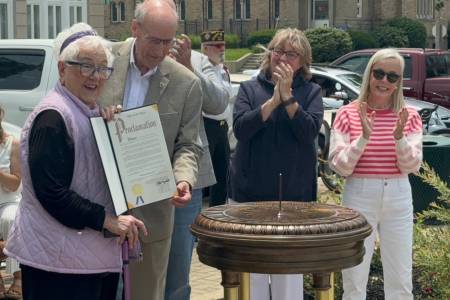 Sundial dedication May 31, 2025. At left is Kathleen Stuckey Fox, with the City Proclamation presented by Mayor Pat Moeller and City Council on-lookers Carla Fiehrer and Susan Vaughn offering congratulations.
On May 31, 2025 at 1pm, the Hamilton, Ohio, sundial (NASS Sundial Registry #1109) was re-dedicated in Monument Park. Originally dedicated in 1941 to the...
Sundial dedication May 31, 2025. At left is Kathleen Stuckey Fox, with the City Proclamation presented by Mayor Pat Moeller and City Council on-lookers Carla Fiehrer and Susan Vaughn offering congratulations.
On May 31, 2025 at 1pm, the Hamilton, Ohio, sundial (NASS Sundial Registry #1109) was re-dedicated in Monument Park. Originally dedicated in 1941 to the...
Frans Maes Received a Royal Decoration
Monday, 24 March 2025 21:33
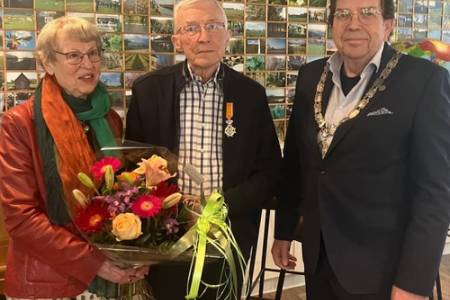 Several years ago Frans decided to write the course on sundials that included self assessment questions to force students not only to read the text, but to internalize the concepts. And a final submittal question "not necessarily a difficult question, but: no answer, no new lesson." Thus Frans Maes began writing lessons and sending them out to students.
NASS has now used his material to create...
Several years ago Frans decided to write the course on sundials that included self assessment questions to force students not only to read the text, but to internalize the concepts. And a final submittal question "not necessarily a difficult question, but: no answer, no new lesson." Thus Frans Maes began writing lessons and sending them out to students.
NASS has now used his material to create...
Pros and Cons of Daylight Savings Time
Monday, 24 March 2025 15:37
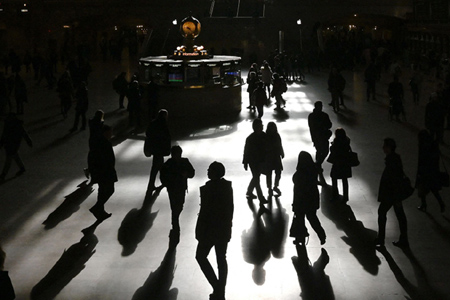 In a 24 March 2025 article from the on-line Science Advisor (American Association for the Advancement of Science) Phie Jacobs summarizes the "great debate" of the yearly shift from standard time to daylight savings time. In January 2025 the US Senate introduced the Sunshine Protection Act to permanently have daylight savings time year round. Certainly 54% of Americans do not like the...
In a 24 March 2025 article from the on-line Science Advisor (American Association for the Advancement of Science) Phie Jacobs summarizes the "great debate" of the yearly shift from standard time to daylight savings time. In January 2025 the US Senate introduced the Sunshine Protection Act to permanently have daylight savings time year round. Certainly 54% of Americans do not like the...
Native American Moon Alignment Ring
Friday, 21 March 2025 19:26
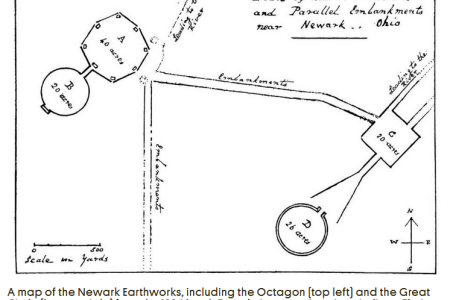 Perhaps the most famous alignment circle in the United States is the Cahokia Woodhenge near St. Louis constructed between 700-1400 CE by Cahokia Indigenous native Americans. But there were an estimated 10,000 other earthen mounds that once were scatter across the mid-west..
In an article from Atlas Obscura (https://www.atlasobscura.com/articles/octagon-earthworks-ohio) by Olivia Young on March...
Perhaps the most famous alignment circle in the United States is the Cahokia Woodhenge near St. Louis constructed between 700-1400 CE by Cahokia Indigenous native Americans. But there were an estimated 10,000 other earthen mounds that once were scatter across the mid-west..
In an article from Atlas Obscura (https://www.atlasobscura.com/articles/octagon-earthworks-ohio) by Olivia Young on March...
Hamilton Dial under Restoration
Friday, 21 March 2025 18:37
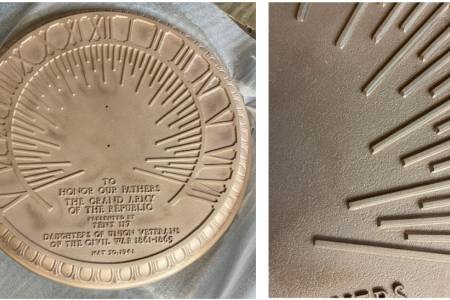 The Hamilton dial is in the restorative care of Jarrett and Celene Hawkins (Hawkins & Hawkins Custom, LLC in Cincinnati Ohio https://www.studio-hawkins.com/) in preparation for the dial's dedication on Saturday, May 31, 2025.
The face of the Hamilton Grand Army of the Republic (GAR) sundial has been cleaned and bead-blasted showing the dial as it was cast 84 years ago. In the process,...
The Hamilton dial is in the restorative care of Jarrett and Celene Hawkins (Hawkins & Hawkins Custom, LLC in Cincinnati Ohio https://www.studio-hawkins.com/) in preparation for the dial's dedication on Saturday, May 31, 2025.
The face of the Hamilton Grand Army of the Republic (GAR) sundial has been cleaned and bead-blasted showing the dial as it was cast 84 years ago. In the process,...
VSSC Space Museum gets Polar Sundial
Tuesday, 17 December 2024 23:47
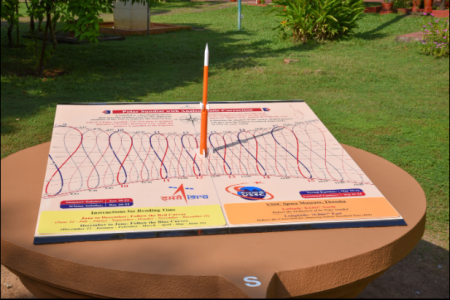 In November 2024, a team consisting of members from SPL, TTDG and CMD of VSSC successfully designed and installed an accurate and fully functional sundial at the Rocket Garden of VSSC Space Museum, Thumba (8.53°N, 76.86°E). Following a space theme, the vertical gnomon is a 3-stage rocket that casts its daily and seasonal shadow on a dial face 1 1/2 meters by 1 meter. The the sundial face...
In November 2024, a team consisting of members from SPL, TTDG and CMD of VSSC successfully designed and installed an accurate and fully functional sundial at the Rocket Garden of VSSC Space Museum, Thumba (8.53°N, 76.86°E). Following a space theme, the vertical gnomon is a 3-stage rocket that casts its daily and seasonal shadow on a dial face 1 1/2 meters by 1 meter. The the sundial face...
Historic Sundials of Andalusia
Saturday, 16 November 2024 00:07
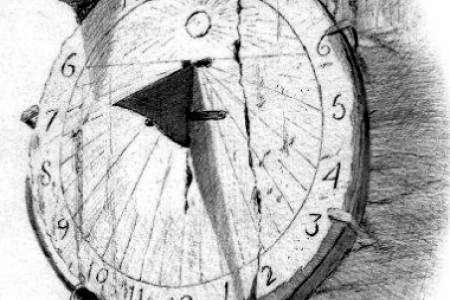 Esteban Martínez Almirón has published a new book Historical Sundials: Forgotten Andalusian Treasures (Relojes de Sol Históricos Tesoros Andaluces Olvidados) In it he reviews over 400 sundials from the Andalucian region of southern Spain Originally to celebrate the 25th year of the website https://relojandalusi.org/
Esteban Martínez Almirón began showing his sundial drawings on the site....
Esteban Martínez Almirón has published a new book Historical Sundials: Forgotten Andalusian Treasures (Relojes de Sol Históricos Tesoros Andaluces Olvidados) In it he reviews over 400 sundials from the Andalucian region of southern Spain Originally to celebrate the 25th year of the website https://relojandalusi.org/
Esteban Martínez Almirón began showing his sundial drawings on the site....
Sundial History and Vandal Dynamite
- Details
- Hits: 11446
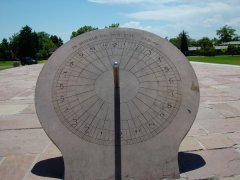 Want to know the history of Cranmer Park in Denver Colorado and why the current Erickson equatorial dial is there on the terrazzo plaza? Downtown Main Street provides a glimpse of its history and the dynamiting of a dial that stood in the park for 25 years before. Read the article in Downtown Main Street and visit the North American Sundial Registry Entry NASS Denver Sundial-24.
Want to know the history of Cranmer Park in Denver Colorado and why the current Erickson equatorial dial is there on the terrazzo plaza? Downtown Main Street provides a glimpse of its history and the dynamiting of a dial that stood in the park for 25 years before. Read the article in Downtown Main Street and visit the North American Sundial Registry Entry NASS Denver Sundial-24.Moore Sundial Stolen and Now Recovered
- Details
- Hits: 12938
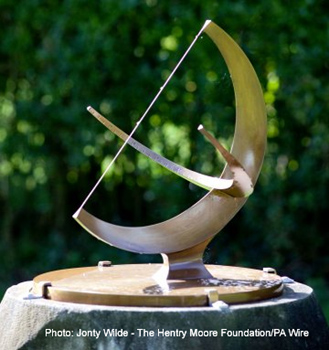 Update: On Saturday July 22nd, less than two weeks after the Henry Moore sundial was stolen, it was recovered by detectives after receiving tips from the British Crimewatch television series. Three young men, all from Essex, have been arrested on suspicion of two counts of theft and are currently in police custody.
Update: On Saturday July 22nd, less than two weeks after the Henry Moore sundial was stolen, it was recovered by detectives after receiving tips from the British Crimewatch television series. Three young men, all from Essex, have been arrested on suspicion of two counts of theft and are currently in police custody.
Chatham Square Dial Vandalized - Again
- Details
- Hits: 12832
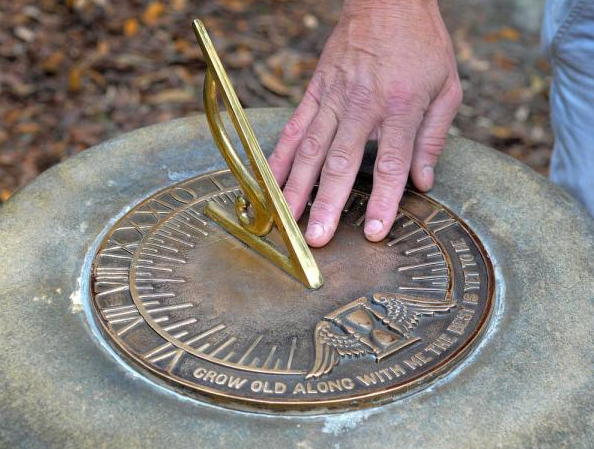
[photo credit: Steve Bisson -
Savannah Morning News ]
|
Lesley Conn reports in the Savannah Morning News the restoration of its vandalized sundial. This is no college prank, but a malicious and repetitive attack on the Louis B. Toomer sundial in Chatham Square in the historic district of Savannah, Georgia. Conn reports that “City officials are adding new elements to the repair process – a public plea for help and a reminder to the monument marauder that destruction of public property is a felony. They made their case Tuesday after sealing a new sundial to the stone base.”
Sun City Dial Re-Dedicated
- Details
- Hits: 9695
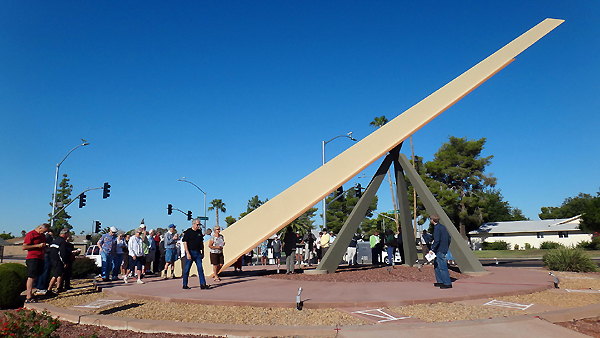
[photo courtesy of John Carmichael]
|
The restored Sun City dial re-dedication ceremony held October 7th, 2011 was a huge success. The sundial originally schedule for demolition is proudly located at The Sundial Recreation Center located at 14801N. 103rd Avenue, Sun City, AZ 85351.
Lost and Found
- Details
- Hits: 12777
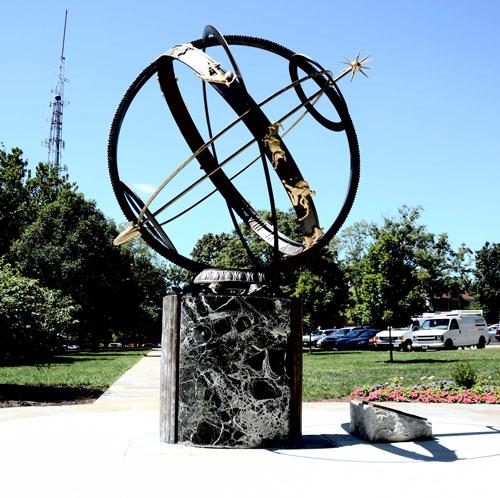
[photo credit: Andrew Bray - The Miami Sudent News]
|
Some dials are lost, others found. Last year students walking through the central quad of Miami University located in Oxford, Ohio, saw that the Tri Delta Sundial, a nearly 2 meter armillary dial, was missing. The armillary was a gift to the university on its 50th anniversary in 1962 by the Miami chapter of Tri Delta. [See the NASS Registry for details]
Sun City Sundial Saved
- Details
- Hits: 11514
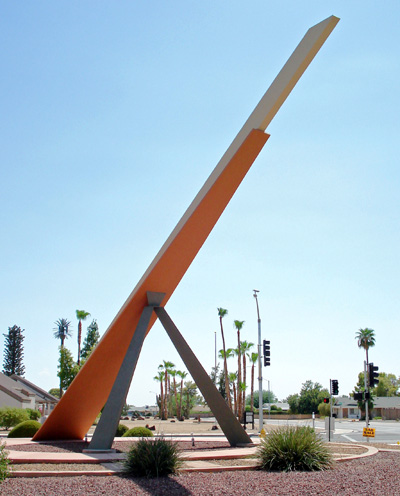 The monumental sundial in Sun City Arizona has been saved! The famous dial has been totally restored to its former glory, perhaps even better than the original. On Friday, October 7, 2011 a formal re-dedication ceremony will begin at 8:30 am.
The monumental sundial in Sun City Arizona has been saved! The famous dial has been totally restored to its former glory, perhaps even better than the original. On Friday, October 7, 2011 a formal re-dedication ceremony will begin at 8:30 am.
Avington Park Sundial Stolen
- Details
- Hits: 13822
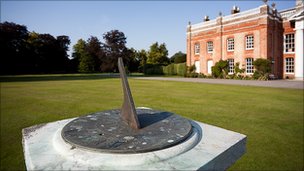 A nearly three-century old brass sundial was stolen in the early overnight hours of August 9 from the grounds of Avington Park in Itchen Abbas, near Winchester (England). Local officials say the dial is large enough it would have required several people to move it. The dial is valued at over £100,000 and is very distinctive.
A nearly three-century old brass sundial was stolen in the early overnight hours of August 9 from the grounds of Avington Park in Itchen Abbas, near Winchester (England). Local officials say the dial is large enough it would have required several people to move it. The dial is valued at over £100,000 and is very distinctive.
Help Find a Stolen Dial
- Details
- Hits: 9954
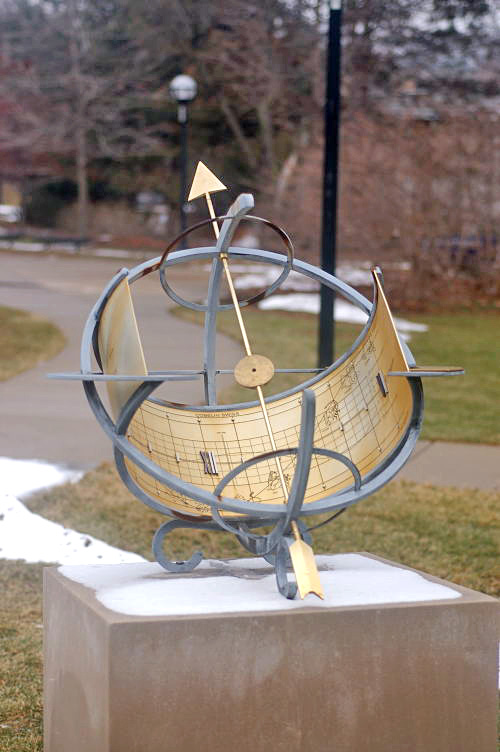 If you look in the NASS Sundial Registry at Dial #617 from Ann Arbor Michigan you will see a lovely equatorial sundial on the grounds of the University of Michigan North Campus near the College of Engineering buildings. The dial exists only as a photo and a memory. Last April between the 13th and 15th it was stolen according to the Detroit Free Press.
If you look in the NASS Sundial Registry at Dial #617 from Ann Arbor Michigan you will see a lovely equatorial sundial on the grounds of the University of Michigan North Campus near the College of Engineering buildings. The dial exists only as a photo and a memory. Last April between the 13th and 15th it was stolen according to the Detroit Free Press.
The bronze equatorial dial has a circular nodus on the polar gnomon arrow to mark the seasons on the broad equatorial band.
Board Elects to Repair Sun City Sundial
- Details
- Hits: 16036
The Recreation Center Sun City (RCSC) Board of Directors has decided to repair the sundial monument at the corner of 103rd Avenue and Boswell Boulevard [in Sun City, Arizona].
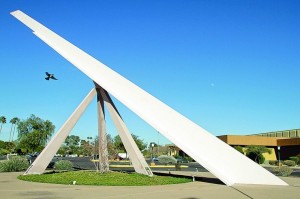 At this time, it is impossible to know an exact repair cost until further inspection can be made below the surface. We do know that the three steel supports at the foundation must be repaired to restore the steel supports’ structural capacity to ensure further deterioration does not occur.
At this time, it is impossible to know an exact repair cost until further inspection can be made below the surface. We do know that the three steel supports at the foundation must be repaired to restore the steel supports’ structural capacity to ensure further deterioration does not occur.
Site Search
Sundial Question?
Current Sun
Civil = Sundial + EoT + dLon
where dLon is (4xNr Degrees W. of Time Zone
Select Sundials by State/Province
Who's Online
We have 500 guests and no members online
